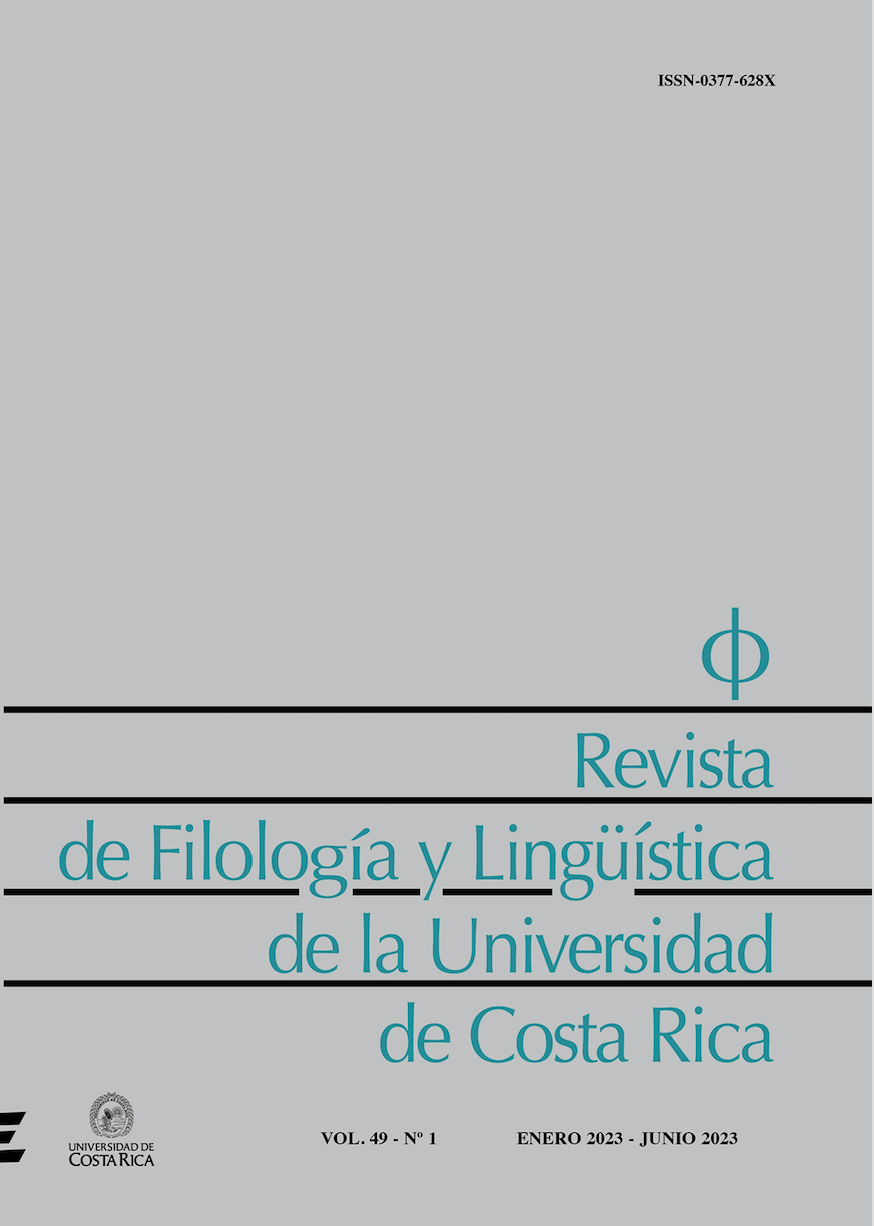Abstract
The main objective of this research is to study humor as a pragmatic and social phenomenon. To this end, we study the satirical-humorous journalism developed in the 19th century during the period known as the Democratic Sexenio from the Revolution of September 1868 until the beginning of the Bourbon Restoration in 1874. This is a period of relative freedom for journalism, which favors the use of irony and humor in the configuration of discourse in the written press. The article presents a brief theoretical framework before discussing the analysis of 16 satirical-humorous magazines, for which we have applied the General Theory of Verbal Humor.
References
Agüero, M. (2013). Análisis semántico-cognitivo del discurso humorístico en el texto multimodal de las viñetas de Forges. ELUA, 27, 7-30.
Alonso, S. (1987). Prensa murciana del siglo XIX. Asociación de la prensa murciana.
Alvarado Ortega, M. (2006). Las marcas de la ironía. Interlingüística, 16, 1-11.
Attardo, S. (1994). Linguistic theories of humor. Mouton de Gruyter.
Attardo, S. (2001). Humorous texts: a semantic and pragmatic analysis. Mouton de Gruyter.
Attardo, S. (2020). The Linguistics of Humor. An Introduction. Oxford Linguistics.
Biblioteca Nacional de España. (s.f). Hermeroteca Digital. https://hemerotecadigital.bne.es/hd/es/advanced
Capdevila, J. (2012). La figura femenina en la prensa satírica española del siglo XIX. Historietas: Revista de Estudios sobre la Historieta, 2, 9-30. https://rodin.uca.es/handle/10498/15346
Charaudeau, P. (2006). Des catégories pour l’humour? Question de communication, 10, 19-41. http://www.patrick-charaudeau.com/IMG/pdf/____2006_b_Humour_Q-_de_Com.pdf
Félix-Brasdefer, J. (2019). Pragmática del español. Contexto, uso y variación. Routledge.
Ferré, C. y Ferrer, I. (2014). Infoentretenimiento y sátira audiovisual: un panorama internacional. En Ferré, C. (Ed.) Infoentretenimiento. El formato imparable de la era del espectáculo (pp. 59-80). Editorial UOC.
Gascón-Vera, P. (2020). Revisión histórica de la prensa satírica española hasta la actualidad: La revista Mongolia y su salto audiovisual a La Sexta y Flooxer. Estudios sobre el Mensaje Periodístico, 26(1), 120-133. https://revistas.ucm.es/index.php/ESMP/article/view/67292
Laguna Platero, A. (2003). El poder de la imagen y la imagen del poder. La trascendencia de la prensa satírica en la comunicación social. I/C Revista Científica de Información y Comunicación, 1, 111-132. https://idus.us.es/bitstream/handle/11441/18275/file_1.pdf?sequence=1&isAllowed=y
Llera, J. (2003). Una historia abreviada de la prensa satírica en España: desde El Duende Crítico de Madrid hasta Gedeón. Estudios sobre el Mensaje Periodístico, 9, 203-214. https://revistas.ucm.es/index.php/ESMP/article/view/ESMP0303110203A
Mancera, A. (2013). Un acercamiento al estudio de la ironía en periódicos satíricos decimonónicos. En M. B. Alvarado Ortega y L. Ruiz Gurillo (Eds.), Humor, ironía y géneros textuales (pp. 147-170). Publicaciones Universidad de Alicante.
Marimon, A. (2017). Entre el humor y la política. La prensa satírica durante la Restauración: el caso de Mallorca. Pasado y Memoria. Revista de Historia Contemporánea, 16, 149-175. https://rua.ua.es/dspace/handle/10045/69632
Pano, A. y A. Mancera (2014). Identidades falsas en Twitter: la ironía y el humor verbal como mecanismos paródicos. Discurso & Sociedad, 8(3), 508-536. http://www.dissoc.org/ediciones/v08n03/DS8%283%29Pano&Mancera.pdf
Primo Jurado, J. (19 de septiembre de 2010). El bandido Pacheco y la Gloriosa. ABC. https://www.abc.es/20100919/cordoba/bandido-pacheco-gloriosa-20100919.html
Raskin, V. (ed.) (2008). The primer of humor research. Mouton de Gruyter.
Real Academia Española (2021). Sátira. Diccionario de la lengua española (23.ª ed.). Recuperado de https://dle.rae.es/sátira?m=form
Reyes, G. (1992). Lo serio, lo cómico y la búsqueda de interlocutor. Voz y Letra. Revista de Filología, 3(1), 19-34.
Reyes, G. (2018). Palabras en contexto. Pragmática y otras teorías del significado. ArcoLibros.
Ruiz Gurillo, L. (2012). La lingüística del humor en español. ArcoLibros.
Schoentjes, P. (2003). La poética de la ironía. Cátedra.
Simarro, M. (2016). Mecanismo de humor verbal en Twitter. Caracteres: estudios culturales y críticos de la esfera digital, 5(2). https://dialnet.unirioja.es/servlet/articulo?codigo=6327696
Tejera, M. (1998). La derivación humorística. Boletín de Filología, 37(2), 1171-1181. https://boletinjidh.uchile.cl/index.php/BDF/article/view/21683/22994
Timofeeva, L. (2009). Las unidades fraseológicas. En L. Ruiz Gurillo y X. A. Padilla (Eds.), Dime cómo ironizas y te dirá quién eres. Una aproximación pragmática a la ironía (pp. 193-217). Peter Lang.


